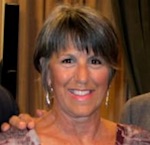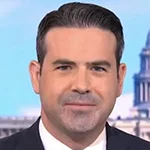A letter-to-the-editor of The New York Times, asking for a probe into the incidence of brain cancer in baseball and tennis players, is posted on this website after NYT failed to run it.
Ellen Marks, Director of the California Brain Tumor Assn., had contacted NYT reporter Jere Longman after his story Aug, 14 on a cluster of brain cancers among catchers and pitchers.
|
|
Longman suggested she send a letter-to-the-editor of no more than 175 words. At issue is whether there is a possible correlation between radar guns and cancer, particularly involving players for the Philadelphia Phillies.
Marks, who has compiled a list of more than 367 prominent people who contracted brain cancer, doubts her letter will be published and in any case, it is now too far removed from the story. She constantly updates the list.
Marks Letter Aug. 20 to NYT:
To the Editor of the New York Times:
Thank you for Jere Longman’s “The Brain Cancer That Keeps Killing Baseball Players.” My colleagues and I have been concerned about this for several years. Many of those affected were pitchers and catchers. Umpires have also been affected. They did not all play or work at the same stadium.
Ionizing radiation is a known cause of brain tumors; concussions, chewing tobacco and pesticides are not. The World Health Organization has classified wireless radiation as possibly carcinogenic to humans. There is extensive independent peer reviewed published science demonstrating non-ionizing radiation from cell phones and other wireless devices break the blood brain barrier, damage DNA and cause cancer.
We are not certain that radar guns are the cause, but we have a moral obligation to examine this closer to prevent further harm to our beloved players of America’s favorite past time.
Experts should also look at tennis players, as many young professionals have perished from primary brain tumors. Radar guns are used in both sports.
Thank you.
Ellen Marks, Director, California Brain Tumor Association
Marks and Others Battle Cell Tower Bill
Marks, medical writer Susan Foster and many others are battling Calif. Bill SB 649 which would allow bulky cell tower installations every 5-10 homes. The bill will go to Gov. Jerry Brown in mid-September.
The governments of 290 of the 400 cities in the state have voiced opposition to the bill, says medical writer Susan Foster. The bill will be sent to the Senate for several amendments to be ratified before being given Brown. Opponents are hoping for a veto.
Foster, an honorary firefighter in the San Diego Fire Dept., is trying to get the 300,000-member Int’l Assn. of Firefighters to join the battle against SB 649. Firehouses are exempted in the current bill.
Firefighters since 2004 have succeeded in blocking cell towers from any location at or near firehouses.
International Association of Fire Fighters has chronicled health impacts from closely located cell towers such as fatigue, headaches, “brain fog,” and more serious conditions. Firefighters’ health concerns are respected by this bill, but everyone else’s should be too, says Marks.
Baseball Player Victims Listed
Health advocate Joe Imbriale, who hosts the Fullerton, Calif., Informer, tracked ten baseball players who had brain cancers, saying the numerous microwave radar guns that measure speed of every pitch may be the cause.
Five who played at Veterans Stadium for the Phillies including Tug McGraw, John Vukovich, Johnny Oates, Ken Brett and Daulton, developed brain tumors.
Daulton, it was reported by this website July 25, contracted two brain cancers that were successfully removed in 2013.
Gary Carter, who caught for the Montreal Expos for 11 years to 1984 when he was traded to the New York Mets, handling 300,000+ pitches that were measured by radar guns, developed brain cancer that led to his death at 57 on Feb. 16, 2012.
Dan Quisenberry, (1953-98), a right handed pitcher for the Kansas City Royals, who developed brain cancer on his left temporal lobe. Bobby Bonds, father of Barry Bonds, an outfielder, developed brain tumor and lung cancer.
Vukovich (1947-2007) was an infielder who spent most of his career at third base. His brain tumor was diagnosed in 2001.
Catcher Oates (1946-2004) had a tumor in the back of his head in the brain stem.
Pitcher Ken Brett (1948-2003) had a tumor on his frontal lobe.
Catcher Daulton had two brain tumors that were successfully removed in 2013
Pitcher Ricky Stone of the Cincinnati Reds survived after being operated for a brain tumor in 2009.
Bobby Murcer (1946-2008) New York Yankees center fielder and broadcaster, died of a tumor that was on his right frontal lobe.
Curt Schilling, former Phillies pitcher and recently announced he was diagnosed with mouth cancer which he blamed on chewing tobacco.
Tennis Victims
Todd Witsken, 34, three-time All-American at USC who won 11 doubles titles as a pro, died at 34 in 1998, 21 months after a tumor was removed from his brain.
James Broach, 37, who won a national singles title at Trinity University, died in 2013, three years after developing a brain tumor.
Stephen Bell, 38, who won singles championships in in 1993-95 and 1997 in Cambridgeshire County, U.K., died Oct. 15, 2009, after a long bout with brain cancer.
Tim Gullikson, 44, longtime tennis pro who trained Pete Sampras, winner of 14 Grand Slam tennis matches, died May 3, 1996, of an inoperable brain cancer.
Chuck McKinley, 45, Wimbledon singles champion in 1963 and inducted into the Tennis Hall of Fame, died Aug. 11, 1986, from brain cancer which was diagnosed in May 1985.
Rene Simpson, 47, ranked tennis player including No. 32 in doubles, who captained Canada’s Fed Cup tennis team from 2001-09, died Oct. 17, 2013, after a long bout with brain cancer.
Helen Kelesi, Canadian tennis pro who was inducted into the British Columbia Sports Hall of Fame in 2008, survived brain cancer after seven operations. One tumor was the size of a tennis ball. She was afflicted in 1995 at age 26.

 Ellen Marks
Ellen Marks
 Husch Blackwell Strategies has added FleishmanHillard alum Michael Slatin as a principal in its public affairs group.
Husch Blackwell Strategies has added FleishmanHillard alum Michael Slatin as a principal in its public affairs group. Rory Cooper, a veteran Republican operative and policy specialist, has joined Teneo’s Washington office as senior managing director in its strategy & communications practice.
Rory Cooper, a veteran Republican operative and policy specialist, has joined Teneo’s Washington office as senior managing director in its strategy & communications practice. Brian Fallon, who served as national press secretary for Hillary Clinton’s 2016 presidential run, is signing on next month as Vice President’s Kamala Harris’ campaign communications director.
Brian Fallon, who served as national press secretary for Hillary Clinton’s 2016 presidential run, is signing on next month as Vice President’s Kamala Harris’ campaign communications director. TikTok is nothing more than a Chinese propaganda tool that poses “a grave threat to America’s national security and, in particular, impressionable children and young adults,” say two Congressmen who want the platform registered as a foreign agent.
TikTok is nothing more than a Chinese propaganda tool that poses “a grave threat to America’s national security and, in particular, impressionable children and young adults,” say two Congressmen who want the platform registered as a foreign agent. Public Strategies Washington has added Abbie Sorrendino, a former aide to now Senate Majority Leader Chuck Schumer.
Public Strategies Washington has added Abbie Sorrendino, a former aide to now Senate Majority Leader Chuck Schumer.


 Have a comment? Send it to
Have a comment? Send it to 
No comments have been submitted for this story yet.